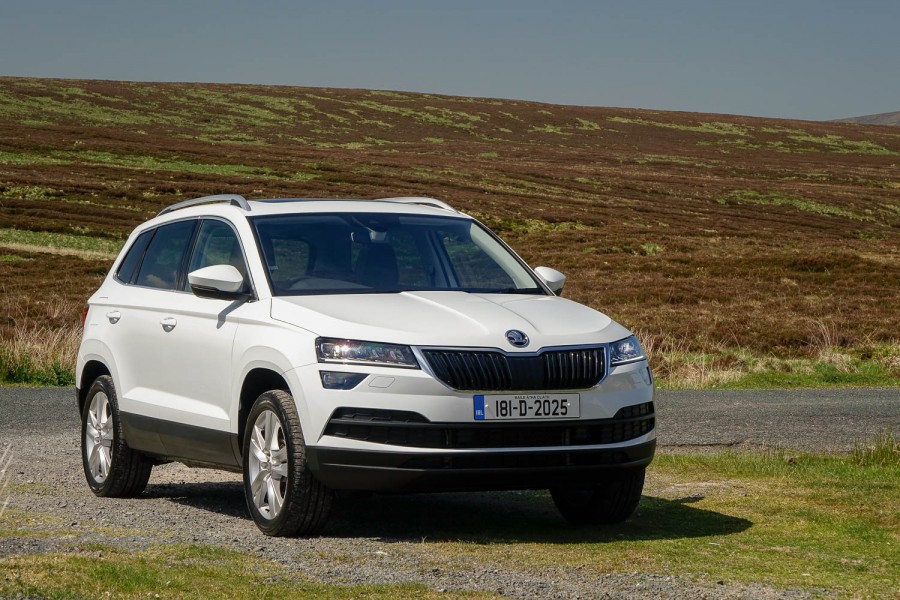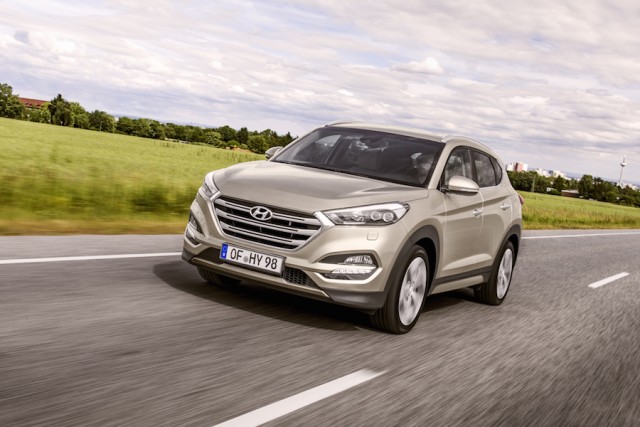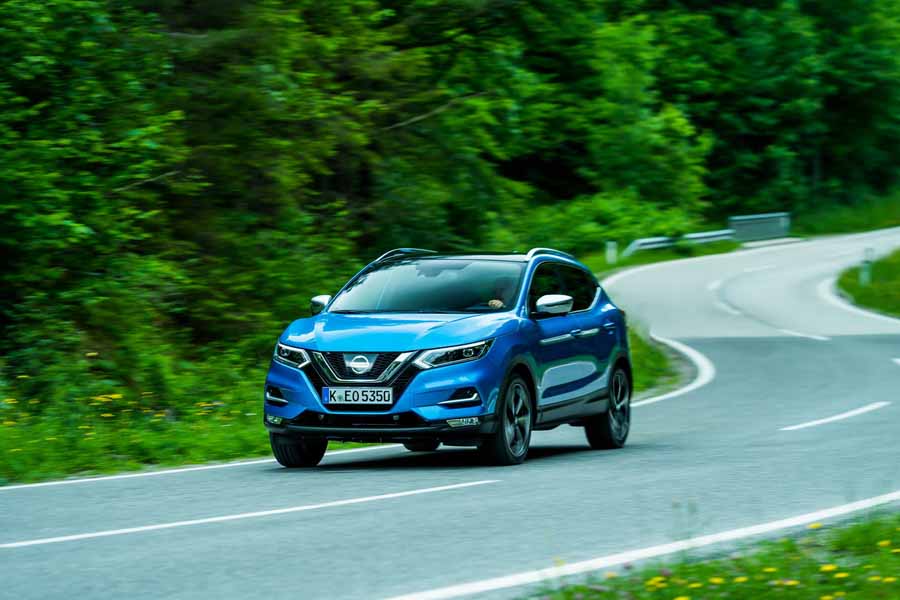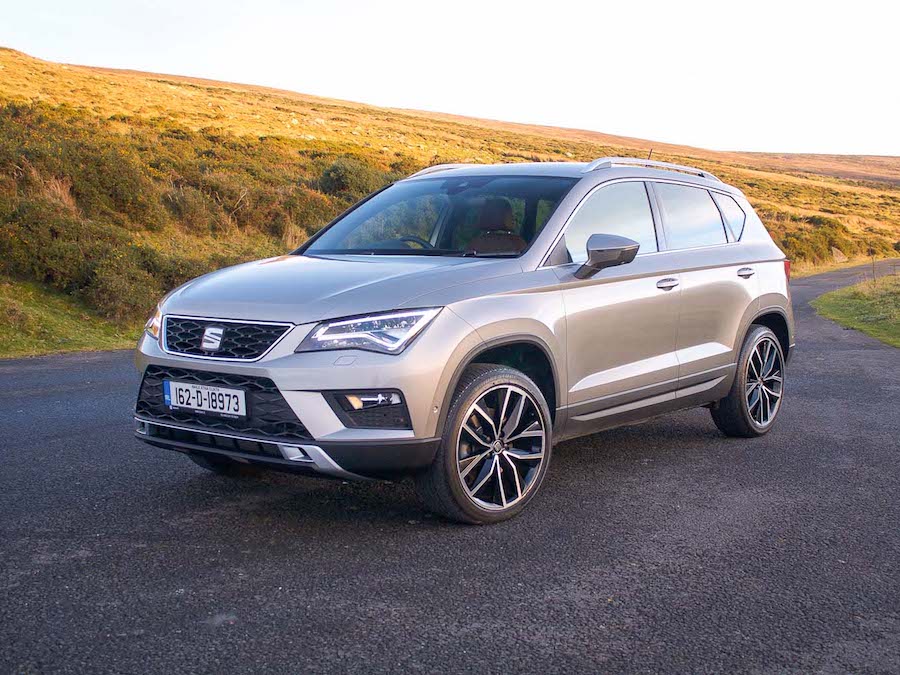Good: practicality, space, comfort, equipment, price, excellent diesel engine
Not so good: styling a touch 'quiet', cabin quality needs work, stop-start system too uncouth
Skoda has been riding the high-stepping horse of success for some time now, turning out one impressive model after another. All of its cars are based on the same mechanical package as an equivalent Volkswagen, a by-now-well-known fact upon which the Czech car maker has carefully and, sometimes brilliantly, traded. It's no lie to say that if you've recently bought a Volkswagen Golf or a Passat, you should have at the very least seriously considered buying a Skoda Octavia or Superb instead, and saved yourself a tidy couple of grand.
As a brand, Skoda is well and truly on the up-and-up, is now a regular fixture in the top-ten selling brands in Ireland, and has just posted record annual sales here. Which makes this Karoq seem like something of a slam-dunk. It's an SUV, a body shape that all but guarantees success these days; it's well priced - starting at €27k for a well-equipped Ambition model and with this bells-and-whistles Style version clocking in at €38k; and the blizzard of excitement surrounding its bigger brother, the Kodiaq, was such that it could barely be contained. Given that the Hyundai Tucson and Nissan Qashqai have lately annexed the number-one selling slot, would you bet on this new Skoda being far behind?
Well, actually, yes I would, but this is a bit of a case of the devil lying in the details.
If we were to be talking about a more basic Karoq, one with perhaps the lovely little 1.0-litre petrol turbo engine, or the ubiquitous 1.6 TDI diesel, then I think I'd be more likely to pick it, and approve of it, as a potential best seller. In this spec though? Hmmmm...
Part of that hmmmm... comes from the styling. The Karoq more or less replaces the old Yeti in the Skoda line-up (although a more compact model, with more Yeti-ish styling, is on the way), but it looks quite bland in its styling. True, the Yeti put a lot of potential buyers off with is four-square, almost Lego-like styling, but the Karoq just looks a bit forgettable. It's very similar to the Kodiaq in its looks, which doesn't help (you could very easily confuse the two at a glance) and while there is some nice detailing close-up (the split light units at the front, for instance), from further back it's just rather ordinary.
The interior gets off to a good start, however. The dash and fascia are more sculpted than the flat, blocky look of the Kodiaq and the usual nice Skoda touches are there - neat main dials (digital instruments are optional); a flexible central storage/cup holder layout (love the bobbled cup holder bases that allow you to open a bottle of drink with one hand); an excellent 9.2-inch touchscreen system (the Volkswagen Group remains well ahead of most rivals in this area); and an overall sense of comfort and space.
There's almost enough width in the rear seat for three booster seats across the back, and the massive 521-litre boot comes with all manner of hooks, luggage dividers and tie-down nets. Added to which, those back seats not only fold flat to increase load space, they also (optionally) lift out altogether, turning the Karoq into an impromptu van.
There's a problem, though and it's in the perceived quality. On the whole, the Karoq's cabin feels well put together, but there are a few questionable material choices that means you do find some cheap-feeling plastics here and there inside. And then you realise that, on this car at any rate, the cabin is full of annoying little squeaks and rattles, and this on a car with barely 4,000km on the clock. Previously, pretty much every Skoda has had an interior that felt at least as well made and of at least as high quality as anything from the mothership VW brand. This Karoq represents the first time for a long time where I've felt that to just not be the case. A Volkswagen Tiguan has a much higher-quality interior.
Some of the culpability for the interior squeaks can be laid at the door of the 18-inch alloy wheels and their attendant low-profile tyres. Yes, I know - they look nice, but come on. This is a family car, and do you really want your family to be bumped and jolted over every lump and bump, especially at urban speeds? Other Karoqs that we've driven have been very comfortable. This one had a shocking ride quality.
It is, that ride aside, decent to drive though. The Karoq has quick, but light, steering that's easy to get on with, but doesn't tell you much of what the front wheels are up too. It's a steady chassis underneath: benign and pleasant without ever taxing you, nor entertaining you.
The 2.0-litre TDI diesel engine is one of the more refined four-cylinder oil burners around, and aside from a touch of grumble and clatter around town, it's very effective. The power is decent, although the addition of four-wheel drive does mean that the Karoq now weighs 1,516kg and you can certainly feel that when you ask for brisk acceleration, and fuel economy should work out in the low-forties mpg. If there's a flaw, it's in the stop-start system, which, when allied to the DSG seven-speed automatic dual-clutch gearbox, tends to shunt heavily when re-engaging the engine after a stop. It's not very refined, in that respect at least.
So a bit of a mixed bag, then. It's not cheap, this version of the Karoq, although with an all-up price tag of €38k, it's also not outrageously expensive, but Skoda definitely needs to pick up its interior quality game again, and this is a model that still works better as a slightly more basic car, where its fundamental appeal shines through rather better.







































